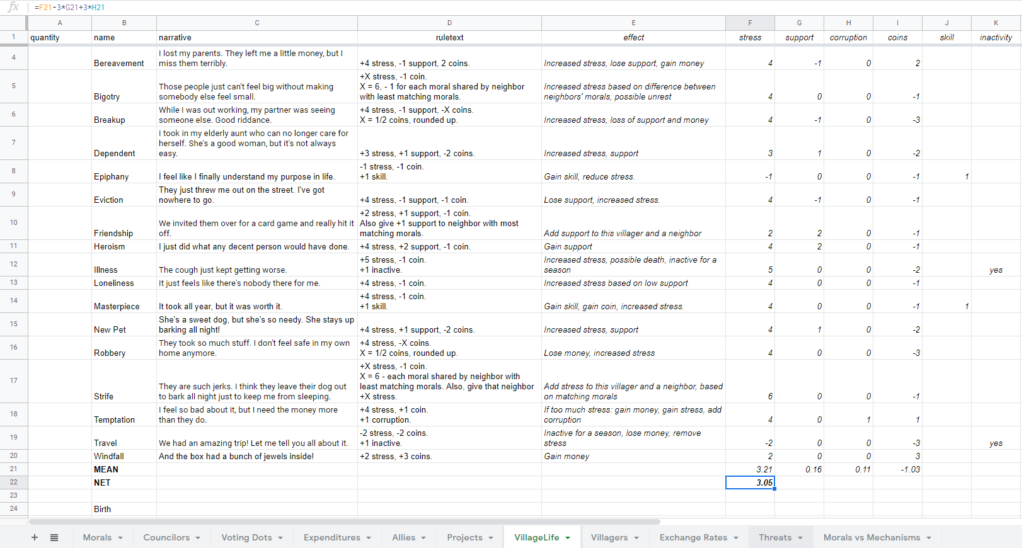I’ve been struggling with creating a deck of Village Life cards to draw for each villager at the end of the year. I had lots of ideas for what to do, but I hadn’t yet committed to anything. This morning I remembered that anything testable, no matter how poorly implemented, is superior to lots of unexpressed ideas.
I knew that I needed the Village Life cards, on average, to cause 2 stress and cost 1 coin. That should allow them to replace the food cost and health rolls I used previously without changing the system economy very much. So in my spreadsheet of card ideas, I added columns for stress, coins, support, corruption, and inactivity. These aren’t the values that will actually appear on the cards, they’re estimated values based on the card effects, which I can use to balance the entire population of cards. For example, if a card causes 3 stress to villager and their neighbor, the value in the stress column is 6, because that’s the adjustment for the village as a whole.

The average at the bottom of the stress column is the Mean Stress change per card draw. But support and corruption also affect the stress in the village, so I also added a Net Stress equal to the Mean Stress, minus 3 times the average in the support column, plus 3 times the average in the corruption column. The current result is +3.05 net stress to the village per Village Life card draw. That’s higher than I thought I wanted, but I’d rather have too much stress in the system than not enough. More importantly, I can look at that net value when I modify the cards to get an idea of how it will affect the entire game.
Unfortunately, when I import the card sheet into Component.Studio, I think it will also try to import the rows for those mean and net values, which will screw up populating the card templates. Maybe there’s a solution for that.